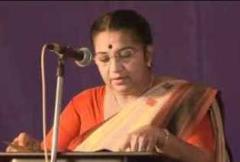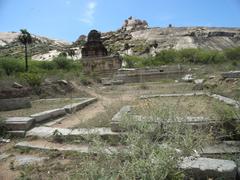Visiting Hours, Tickets, and Historical Significance of Chandragiri Fort in Kasaragod, India
Date: 18/08/2024
Introduction
Chandragiri Fort in Kasaragod, Kerala, is a magnificent relic of 17th-century military architecture, constructed by Shivappa Nayaka of the Ikkeri dynasty. Perched at the confluence of the Payaswini River and the Arabian Sea, the fort once served as a crucial vantage point for monitoring maritime activity and defending the region. Today, Chandragiri Fort stands as a testament to Kerala’s strategic past, architectural ingenuity, and vibrant cultural heritage, drawing visitors with its panoramic views, historical ambiance, and cultural events (DTPCKasaragod, Thrillophilia, Treebo).
Table of Contents
- Historical Background and Significance
- Visitor Information
- Preservation Efforts
- FAQs
- Conclusion
- References
Historical Background and Significance
Origins and Construction
Chandragiri Fort was established in the 17th century by Shivappa Nayaka as part of a network of fortifications to protect his expanding territory. Built primarily of locally sourced laterite stones, the fort’s robust construction has allowed it to withstand centuries of weather and conflict (DTPCKasaragod).
Strategic Importance and Architectural Features
Strategically located at the river-sea confluence and elevated about 150 feet above sea level, Chandragiri Fort provided extensive surveillance of the Arabian Sea and the surrounding region. Spread over seven acres, its squarish layout features:
- Eight Bastions: Each equipped with cannon holes for defense.
- Deep Trenches and Moats: Offering additional protection.
- Underground Passages: Facilitating secret troop movement.
- Watchtowers and Barracks: Remnants show the importance of military preparedness.
- Advanced Water Management: Wells and stepped ponds ensured water supply during sieges (Thrillophilia, Kerala Tourism).
The fort’s architectural style blends Dravidian elements with military pragmatism, evident in its carved gateways and robust defensive features (eIndiaTourism, Kerala Orbit).
Key Historical Events and Archaeological Discoveries
Chandragiri Fort was pivotal during conflicts involving the Nayakas, Portuguese, Mysore Sultanate, and the British East India Company. Excavations have unearthed cannonballs, iron implements, and ancient pottery, providing insight into both the military and daily life of its occupants (Treebo).
Cultural Significance
Beyond its martial history, the fort has become a cultural hub. Local festivals, light and sound shows, and the fort’s reputation as a sunrise and sunset viewpoint add to its contemporary relevance (DTPCKasaragod).
Visitor Information
Visiting Hours and Tickets
- Hours: 9:00 AM to 5:30 PM (closed on Fridays)
- Entry Fee: INR ₹10 for Indian nationals, INR ₹100 for foreign nationals
- Light & Sound Show: Additional INR ₹20 (Indian Panorama, Thrillophilia)
Best Time to Visit
October to March is ideal due to pleasant weather. The monsoon months (June–September) may hinder exploration because of heavy rains (Indian Panorama).
How to Reach Chandragiri Fort
- By Air: Mangaluru International Airport (approx. 65 km away)
- By Train: Kasaragod Railway Station (approx. 7 km away)
- By Road: Easily accessible by private vehicle, taxi, or bus from Kasaragod and nearby towns (Indian Panorama, Kerala Tourism)
Activities and Nearby Attractions
- Exploring the Fort: Walk along the ramparts, visit the bastions, and enjoy panoramic river and sea views.
- Boating: Boat rides on the Chandragiri River offer serene backwater experiences.
- Photography: The fort is renowned for its breathtaking sunrises and sunsets.
- Nearby Attractions:
- Bekal Fort: Kerala’s largest fort located close by (Kerala Tourism)
- Kammadam Sacred Grove Wildlife Sanctuary: A blend of nature and spirituality (Holidify)
- Mallikarjuna Temple: One of the region’s oldest temples, celebrated for its festivals (Holidify)
- Veermala Hills: Offers scenic views and an 18th-century Dutch fort (Holidify)
Accessibility and Visitor Tips
- Terrain: The fort’s uneven terrain may pose challenges for those with mobility issues.
- Guided Tours: Available for deeper historical insights—enquire with local tourism offices for schedules.
- Visitor Tips:
- Wear comfortable shoes and sun protection.
- Carry water and light snacks.
- Respect the monument—avoid littering or damaging structures.
Preservation Efforts
Chandragiri Fort is maintained by the Kerala State Department of Archaeology and the Department of Tourism. Ongoing preservation includes site restoration, archaeological research, and educational programming. The light and sound show is a recent initiative to enhance visitor engagement (Thrillophilia).
FAQs
Q: What are the Chandragiri Fort visiting hours?
A: 9:00 AM to 5:30 PM, closed on Fridays.
Q: How much is the entry fee?
A: INR ₹10 for Indian nationals, INR ₹100 for foreign nationals; INR ₹20 for the light and sound show.
Q: When is the best time to visit the fort?
A: October to March for pleasant weather.
Q: How can I reach Chandragiri Fort?
A: By air (Mangaluru International Airport), by train (Kasaragod Railway Station), or by road from Kasaragod town.
Q: Are guided tours available?
A: Yes, guided tours can be arranged through local tourism offices.
Q: What are some nearby attractions?
A: Bekal Fort, Kammadam Sacred Grove, Mallikarjuna Temple, Veermala Hills.
Conclusion
Chandragiri Fort is a remarkable blend of historical grandeur and natural beauty. Its imposing architecture, storied past, and ongoing cultural events make it a must-visit destination for anyone exploring Kerala’s rich heritage. Preservation efforts ensure the fort remains an accessible and enlightening site, while its scenic vistas and nearby attractions cater to history buffs, photographers, and casual tourists alike. Plan your visit and experience the unique charm of Chandragiri Fort—a true jewel on Kerala’s historical coastline (Thrillophilia, Indian Panorama, Kerala Tourism).
References
- DTPCKasaragod – Chandragiri Fort
- Thrillophilia – Chandragiri Fort
- Treebo – Places to Visit in Kasaragod
- Kerala Tourism – Chandragiri Fort
- Wikipedia – Chandragiri Fort, Kerala
- Indian Panorama – Chandragiri Fort
- Kerala Tourism Video Gallery – Chandragiri Fort
- eIndiaTourism – Chandragiri Fort Bekal
- Kerala Orbit – Chandragiri Fort
- Holidify – Kasargod Sightseeing
- Kerala Tourism – Bekal


